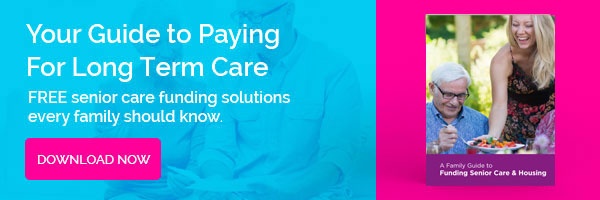When researching retirement options, senior living may seem out of reach. What you may not realize is that there are a number of ways to offset the cost, stay within budget, and enjoy the benefits of senior living. One option to help fund senior living is Veterans Aid & Attendance. Let’s discuss what it is, how it works, and what’s new with this benefit.
What is the Veterans Aid & Attendance Benefit?
Veterans Aid & Attendance was established in the 1950s. It helps wartime veterans or the surviving spouse of a veteran fund care in independent living, assisted living, home health care, adult day care or skilled nursing by providing monthly payments in addition to the amount of a monthly VA pension.
This can significantly increase your buying power which gives you added peace of mind in choosing the best senior living community for your needs.
How Veterans Aid & Attendance Works
You may be eligible for Veterans Aid & Attendance if you receive a VA pension and you meet at least one of these medical requirements:
- You need the aid of another person in order to perform daily activities, like bathing, feeding and dressing.
- You have to stay in bed – or spend a large portion of the day in bed – because of illness.
- You are a patient that requires skilled nursing due to mental or physical incapacity related to a disability.
- Your eyesight is limited (even with glasses or contact lenses you have only 5/200 or less in both eyes; or concentric contraction of the visual field to 5 degrees or less).
Aid & Attendance versus Housebound Benefits
The Housebound benefit is similar to Aid & Attendance in that it also provides monthly payments, in addition to the amount of a monthly VA pension for qualified veterans and survivors. You may be eligible for the Housebound benefit if you receive a VA pension and spend most of your time in your home because of a permanent disability. However, you can’t receive Aid & Attendance benefits and Housebound benefits at the same time.
Recent Changes to Aid & Attendance
Important changes and updates regarding the qualification and approval process for Aid & Attendance occurred in October 2018, such as:
Three-Year “Look Back”
What it is: If a veteran purchases an annuity or transfers an asset and then applies for the benefit, the VA will add any transfer made after October 17, 2018, back to their assets when determining if total assets are less than $127,061.
What it means: People who have in excess of $100,000 but less than the new asset limit (and who thought they needed to wait to have assets below $80,000) are now able to file with confidence.
Primary Home Exclusion
What it is: As of October 18, 2018, if veterans and their surviving spouses are living in independent or assisted living or skilled nursing and they have a primary home they wish to rent, the VA will not count the house as an investment, but will keep it excluded as their primary home.
What it means: While the rental income will count as income, the exclusion of the home as an asset will allow families to maximize the earning potential of the home to pay for care, while retaining the home for later sale or inheritance by the veteran’s heirs.
Adoption of Medicaid Community Spouse Resource Allowance
What it is: The VA is adopting the Medicaid Community Spouse Resource Allowance as the assets an applicant can have (which is $127,061 as of Dec. 1, 2018).
What to Take Note of When Considering Veterans Aid & Attendance
In considering this benefit, as a veteran or surviving spouse, keep these things in mind:
Independent living does count – Don’t believe the myth, you can use independent living expenses as long as you meet the medical requirements above. In fact, you can start receiving this benefit with home care and it can stay with you through each level of care, all the way through to skilled nursing as long as you qualify.
No isn’t no forever – Since your primary home doesn’t count, you may be able to qualify right away. But if you don’t qualify now, that doesn’t mean you won’t ever qualify as medical conditions, income and assets change over time. Keep an eye on it.
If you currently have assets in excess of $127,061 – It’s important to understand how long it will take for them to go below the maximum, as well as to realize that transferring assets may keep you from the benefit longer than waiting for the assets to decline on their own.
It’s not all or nothing – You can get a partial benefit as well. For example, if your income minus home care and facility costs leave you with a positive number or “Income for VA Purposes,” but one less than the Maximum Pension Benefit, you can receive the approximate difference between the Maximum Pension and the calculated Income for VA Purposes.
How to Apply for Veterans Aid & Attendance
You may apply for Aid & Attendance or Housebound benefits by writing to the Pension Management Center (PMC) that serves your state. You may also visit your local regional benefit office to file your request; visit https://www.va.gov/find-locations/ to locate.
As we stated above, there are so many benefits of senior living to enjoy – carefree living, resort-like amenities, more convenience and a range of social, wellness and enrichment opportunities just to start. Now that you know all about the Veterans Aid & Attendance benefit we hope you see that they may be well within reach.
For more information, check out our Family Guide to Funding Senior Care & Housing!



